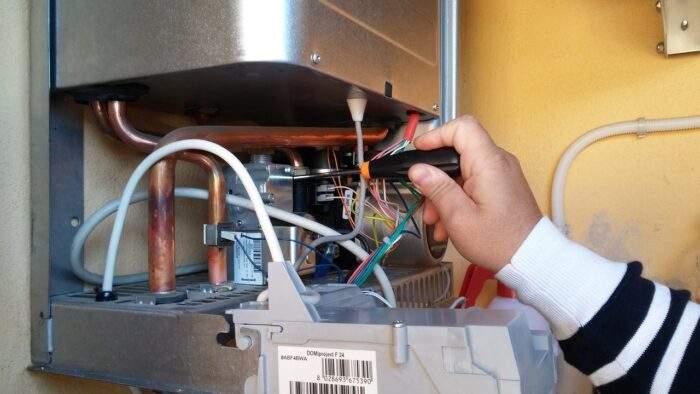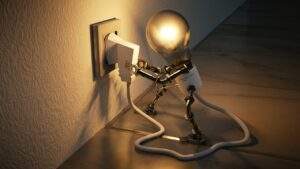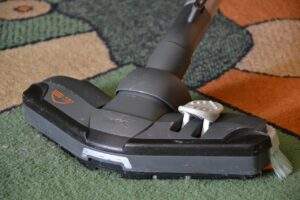Different Components Affecting How Water Heaters Work
Water heaters usually consist of a large, insulated tank powered by gas or electricity. A heating element or gas burner heats the cold water line as it enters the tank’s bottom. A thermostat regulates the temperature, and a pressure relief valve maintains safe water pressure levels.

Dip Tube
The dip tube controls how much hot water you get from your heater. It draws incoming cold water down to the bottom of the tank for heating and then rises to the top to provide hot water to faucets and appliances. Without it, the dense, cold incoming water mixes with the warmer, lighter top layer of hot water, and you end up with only tepid showers and baths.
Since dip tubes are made of plastic, being constantly underwater and exposed to water temperatures and acidity can cause them to break down over time. When this happens, you’ll often find white pieces of dissolved plastic in your drains. If you notice these clogging your sinks, shower heads or aerators, it’s a sign that it’s time to replace the dip tube. Fortunately, manufacturers and the water heater company San Francisco CA, are constantly developing tech to increase the lifespan of their tube materials so that they don’t degrade inside your water heater tank as fast.
Heating Element
The heating element controls how much water is heated in your tank. It’s a cylindrical, insulated rod that is either metal or ceramic and is placed inside the heater jacket. Electrical current passes through the sheath of the nichrome heating alloy wire coil, which converts electric energy into heat. Heating elements are also used in many other products like hair dryers, stoves and ovens, where the function is the same. The element turns on when the thermostat controller senses the temperature is too low. It also turns on the equipment ground lug, providing a common resistance path for the current to follow should the unit become energized.
In addition to the heating element, water heaters have a dip tube to feed cold water and a safety valve to release water out of the tank if it’s too hot. They also have a heat-out pipe at the top of the tank to allow hot water to rise and leave.
Tank
Depending on the model, it may heat the water in the storage tank using electricity or natural gas. A dip tube introduces water to the tank, where a burner or other heating device immediately heats it. When a hot water tap is opened, the heated water exits the tank through your home’s hot water supply pipes and is replaced with cold water entering the dip tube. When a water heater senses that the temperature in the tank has dropped, the thermostat signals to turn on one or both of the heating elements. It’s simple to drain your water heater when it’s time for maintenance or clear sediment from the bottom of the tank, thanks to a drain valve on the outside. The upper thermostat is a larger, temperature-activated switch that commands the lower thermostat. The upper thermostat will power a lower heating element until the water temperature in the tank is at its set point, and then it will instruct the lower part to shut off.
Thermostat
The thermostat is a device that controls how hot your water is. It uses a sensor that changes its state as the temperature rises or falls, and this signal is used to switch an electric circuit on or off. Most mechanical thermostats use materials that, like water, expand as they warm up and contract as they cool down. Some common mechanical thermostats include bimetallic strips, wax bellows, or bulbs filled with gas. When you call for hot water, the thermostat switches electricity to the lower heating element until two-thirds of the tank is at the set temperature. When the lower heating element reaches the set temperature, it shuts off. Meanwhile, the upper heating element continues to operate until you call for hot water again.






